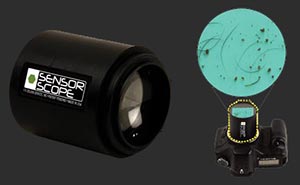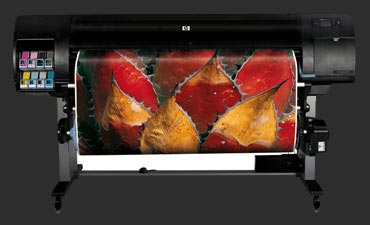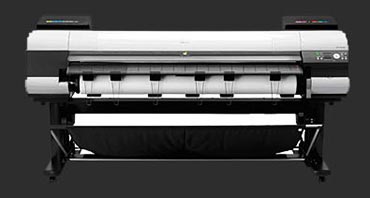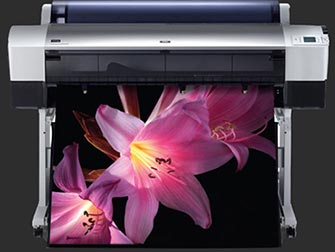Product rumors and expectations
As expected Canon announced their new 1DMark3 body at PMA. My sources tell me we should see some new lenses this year, a 21 megapixel 1DsMark3 in September and not to expect a 5D refresh until 2008. Canon announced today a slight refresh of the PROGRAF ipf printers that contain a sensor for onboard calibration.
Adobe has released Creative Suite 3. Users of the public (and private) betas are strongly encouraged to uninstall their beta before installing the final release. A "CS3 Clean Script" can be downloaded from http://www.adobe.com/support/contact/cs3clean.html for removing stubborn copies that sometimes aren't deleted by the uninstaller.
Epson has told me they will discontinue the 7800, 9800 and possibly the 4800 this year. The new models that will replace them will incorporate the same improvements as the 3800; new screening, faster print speeds and simultaneous photo and black ink handling. While HP and Canon's large format printers have dedicated print heads for each black ink, Epson's new printers have a single print head that requires flushing between photo or matte black ink usage. HP and Canon's inksets include red green and blue inks and the additional print heads for them increase the cost of the printer. Epson has decided to stick with their 9 ink inkset but will release an updated 9 ink inkset that expands the gamut without increasing the number of inks, print heads and printer pricing. Epson's new inks are rumored to be compatible with existing K3 ink printers. My sources have not confirmed the rumors of an upcoming 12 ink inset from Epson but anything is possible. We will also see that 60" model they have been talking about for years and showed privately at PMA in Vegas.
HP held a private demonstration of their 8 color, 42" and 60" Z6100 printers two weeks ago week in Boston. The Z6100 series printers are faster and wider than the 8 color version of the Z3100 printers that they are otherwise nearly identical to.
SensorScope is a $190 kit that allows photographers to clean their own DSLR sensor. It includes a magnification "lens" with LED illumination, vacuum, cleaning solution and wipes. This kit brings confidence to this delicate procedure and belongs in every photographers bag. Available now. http://www.delkin.com/products/sensorscope/
|
Thoughts and Observations on HP, Canon and Epson large format fine art printers
I've had the pleasure of meeting with some of the engineers at Canon and HP that developed the latest iPF and Z series printers that are aimed at the fine art market that Epson has dominated. I've also been running tests in my studio on these printers to see how they compare with the tried-and-true Epson technology. These printers use user-replaceable thermal print heads as opposed to Epson's fixed piezoelectric print head technology. While thermal head technology has been an inconsistent performer in the past, it appears that HP and Canon have good reason to expect these latest heads to be extremely consistent over their lifetime. Extremely high volume users should however expect to replace their thermal heads more frequently than piezoelectric heads. All of these printers use pigment based inks that are very archival. While there are many, many details to discuss, I'd like to provide a brief overview of the notable differences between these printers.
 HP Z series Printers HP Z series Printers
24" and 44" models available in 8 or 12 ink configurations, 60" available with 8 inks.
Pros: Only printer in category with a gloss enhancer (GE) and built in spectrophotometer. HP's GE "Econo" mode puts the GE only on inked areas (instead of the entire page) for a spot varnish-like effect. The advanced black and white mode has three way split toning control. Comes network ready with an Ethernet port. Extremely well thought out driver allows for a very pleasurable and well informed user experience. Ink and paper tracking on a per job basis. The printer's hard drive allows for centralized profile storage that works with the driver for network wide profile distribution and updating. Quickly growing 3rd party RIP support. Roll paper loads without any buttons or levers. User replaceable print heads.
Cons: Expensive (particularly 24" models). Slow when the desirable "quality" resolution setting is used. No printers smaller than the 24" model use the same 12 color fine art inkset. Black inks are more susceptible to reversal (solarization) than others. Longevity of print heads is unproven.
Note: HP has been releasing firmware updates that address a problem with the gamut in the red and green areas. HP is releasing another firmware update today (May 7th) that should complete this series of fixes. All HP Z series users should be sure to update their firmware as this is critical to good quality.
InkCosts: (from Amazon.com)
130ml cartridges = 50 cents per ml, $65.33 each, $783.96 for a complete set
 Canon PROGRAF iPF series printers Canon PROGRAF iPF series printers
12 inks, 17", 44" or 60" widths. 24" model coming soon.
Pros: Fantastic, best-in-category print speeds and color gamut. Plug-in supports true 16-bit printing up to 59 feet long. Growing 3rd party RIP support. User replaceable print heads. Well thought out features like no scratch paper handling, and a paper tray (on the ipf5x00) that is separate from output paper handling. Comes network ready with an Ethernet port. Canon recently reduced the price of their printers to match Epson's equivalently sized printers which makes them a surprisingly good value. The just announced 5100 and 6100 printers add an on-board sensor for automatic calibration (but not profiling) which will ensure printing consistency over time and after print head replacements.
Cons: Longevity of print heads is unproven. No gloss enhancer or built in spectro.
Note: Although Canon has had a challenging first year with various issues on these printers (well publicized by John Hollenberg's Wiki) it appears that Canon has come along way to iron out the kinks and is finding it's stride in this division. Now that the ipf5000 is priced the same as Epson's 3800 you have to wonder why one would buy the 3800.
InkCosts: (from Atlex.com and Amazon.com)
130ml cartridges = 56 cents per ml, $72.95 each, $875.40 for a complete set (this size only for the ipf5000 and ipf5100)
330ml cartridges = 47 cents per ml, $157 each, $1884 for a complete set
700ml cartridges = 38 cents per ml, $269 each, $3228 for a complete set
Epson Stylus Pro K3 ink Printers
9 inks, 17", 24", 44" widths. 60" model coming soon.
Pros: Known reliability, best 3rd party RIP support. Inks have slightly less bronzing and gloss differential than others.
Cons: Ink flushing and waste. Requires switching between photo and matte black ink. Slightly smaller gamut than competition. Print heads are not replaceable but have proven to have good longevity. Ethernet card sold separately. No gloss enhancer or built in spectro.
Note: While the current Epson's aren't particularly impressive they are the safe, known choice and K3 users might have an improved inkset to look forward to.
InkCosts: (from Atlex.com)
80ml cartridges = 62 cents per ml, $49.99 each, $449.91 for a complete set (this size only for the 3800)
110ml cartridges = 45 cents per ml, $49.95 each, $449.55 for a complete set
220ml cartridges = 38 cents per ml, $82.50 each, $742.50 for a complete set
Canon and HP are both moving quickly with driver and firmware updates that fix bugs, improve quality and introduce new features. Epson has some serious competition and is loosing it's grip on the fine art and large format printing markets. With these printers changing quickly it is difficult to make recommendations. For the moment, the Canon printers have the best gamut, speed, range of widths and are a particularly good value with the newly reduced pricing which should make them attractive to photographers and fine art printmakers. Epson's known print head longevity should make them attractive for high volume, long lifespan users. Offset proofing environments (print shops, advertising and design agencies) will be tempted by Epson for known reliability, Canon for speed and especially HP for their gloss enhancer, onboard spectro and usability across a network of computers.
|